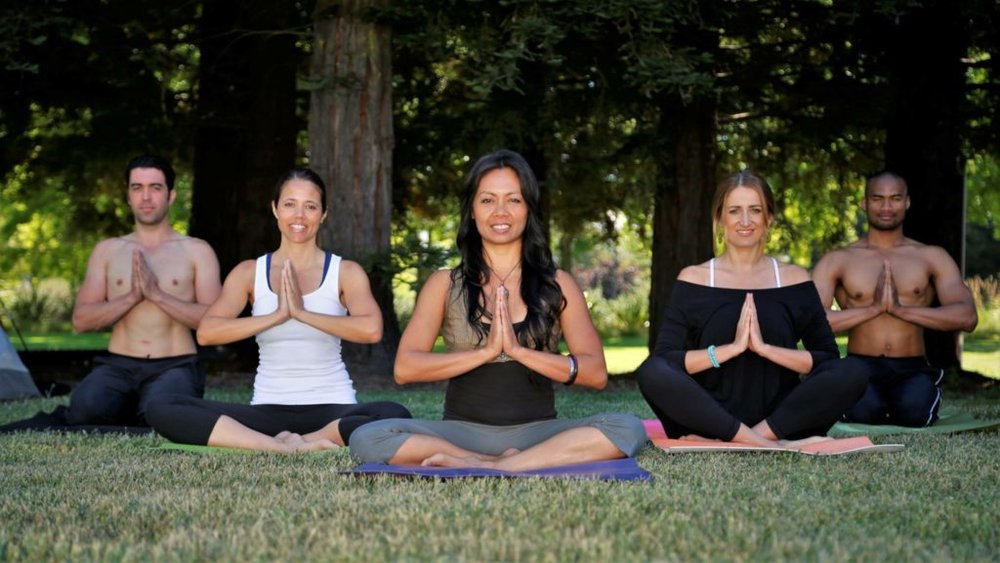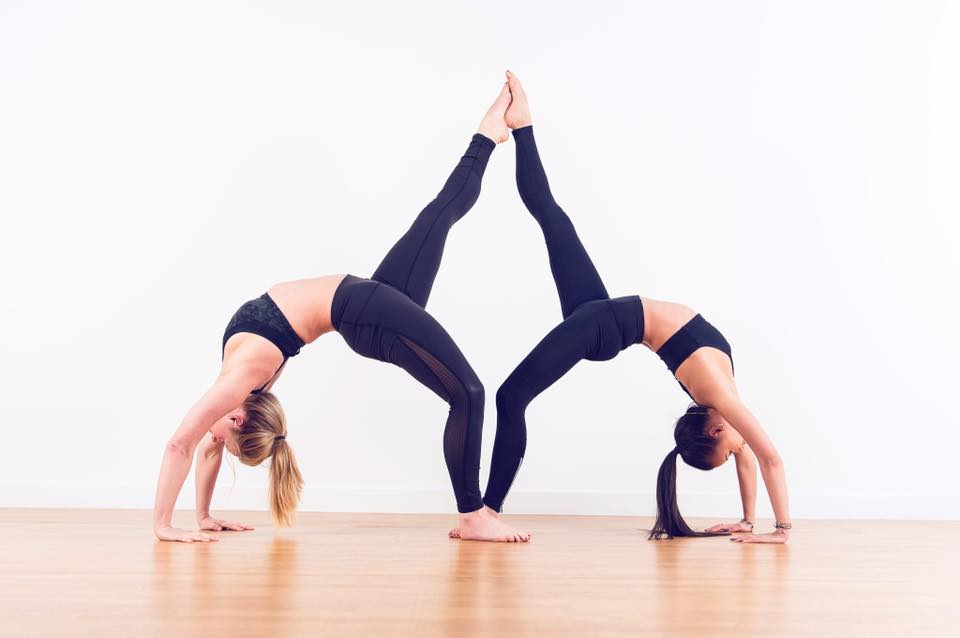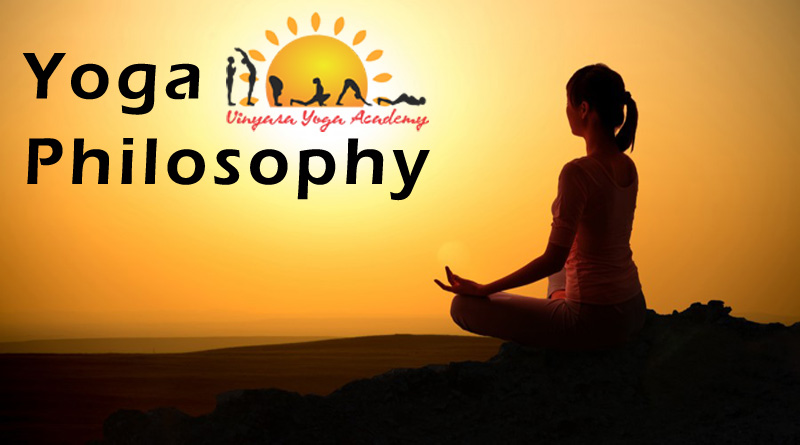
Yoga is a well-established science comprised of various orders of psyche and body. It has begun in India 2500 years back is as yet successful in conveying generally speaking wellbeing and prosperity to any individual who does it routinely. The word yoga depends on a Sanskrit action word Yuja. It intends to associate, to finish or to agree. It’s the finish of brain and body or the perfection of Jiva and Shiva (soul and the all-inclusive soul). It’s additionally a perfection of Purush and Prakriti (Yin and Yang).
The term Yoga has an exceptionally expansive degree. There are a few schools or frameworks of Yoga. Dhyana yoga (Yoga through learning), Bhakti yoga (Yoga through commitment), Karmayoga (Yoga through activity), Raja yoga (Royal or preeminent Yoga) and Hathayoga (Yoga by adjusting inverse standards of the body). These schools of Yoga are not really altogether different from one another. They are somewhat similar to strings of a similar fabric, ensnared into one another. For a great many years, Yoga has been viewed as a powerful method for personal growth and profound edification. Every one of these frameworks basically has this equivalent reason; just the methods for accomplishing it are minimal diverse for every one of them. In its most prevalent structure, the term Yoga has come to connect with the remainder of these frameworks which is Hatha yoga. With the end goal of this article as well, the term Yoga is utilized with similar importance. In spite of the fact that, with regards to the Philosophy of Yoga, which is toward the finish of this article, the term Yoga will have a more extensive degree.
Asana and Pranayama
How about we investigate the fundamental two segments of Hatha yoga for example Asana and Pranayama.
an) Asana:
Asana implies procuring a body pose and keeping up it as long as one’s body permits. Asana, when done properly as indicated by the guidelines talked about above, render gigantic physical and mental advantages. Asana is viewed as the primer advance to Pranayama. With the act of Asana, there is adjusting of inverse standards in the body and mind. It likewise disposes of dormancy. Advantages of Asana are improved with longer support of it. Asana should be steady, consistent and wonderful. Here is the rundown of general guidelines to be pursued for doing Asana.
Rundown of standards:
- Typical relaxing
- Centered extending
- Steady and lovely stances (thiram sukham asanam)
- Insignificant endeavors (Prayatnay shaithilyam)
- No correlations or rivalry with others
- No rascals or fast activities. Keep up a gradual beat.
Every asana has its own advantages and a couple of regular advantages, for example, security, adaptability, better hormonal discharge, feeling revived and restored. It’s a misguided judgment that an Asana (Yoga extend) must be hard to do so as to be valuable. Huge numbers of the simplest Asana render the vast majority of the basic advantages of Yoga to their fullest. In addition, the excellence of Yoga is in the way that at a not really consummate dimension the majority of the advantages are as yet accessible. That implies even a tenderfoot advantage from Yoga as much as a specialist.
In their journey to discover an answer for the torments of the human body and psyche, the originators of Yoga discovered a piece of their answers in nature. They watched the winged animals and creatures extending their bodies specifically designed to dispose of the inactivity and discomfort. In view of these perceptions, they made Yoga extends and named them after the winged animals or creatures or fish that motivated these stretches. For instance, matsyasana (fish present), makarasana (crocodile present), shalabhasana (grasshopper present), bhujangasana (cobra present), marjarasana (feline posture), mayurasana (peacock present), vrischikasana (scorpion present), gomukhasana (cow’s mouth present), parvatasana (mountain present), vrikshasana (tree present) and so forth.
A considerable lot of the Asana can be comprehensively classified dependent on the sort of weight on the stomach area. The majority of the forward twisting Asana are certain weight Asana as they put positive weight on the stomach by crunching it, for example, Pashchimatanasana, Yogamudra (Yoga image present), Hastapadasana (hand and feet present), Pavanmuktasana (twist free posture) and so on. The retrogressive bowing Asana are the negative weight Asana as they remove weight from the midriff, for example, Dhanurasana (bow present), Bhujangasana (cobra present), Naukasana (pontoon present) and so forth. The two sorts of Asana give superb stretch to the back and guts and fortify both these organs. Switching back and forth among positive and negative weight on a similar territory of the body increases and improves blood course around there. The muscle aggregate being used gets more supply of oxygen and blood because of the weight on that spot. For example in Yogamudra (image of Yoga), the lower stomach area gets positive weight because of which Kundalini is stirred. Hastapadasana revives all nerves in the back of the legs and furthermore in the back. Therefore you feel new and restored. Vakrasana gives a decent back rub to the pancreas and liver and consequently is suggested for diabetic patients.
- Pranayama
Rehearsing Pranayama is one of the methods for disposing of mental unsettling influences and physical sick wellbeing. Pranayama implies controlled and delayed range of breath. Prana implies breath. It additionally implies life drive. Ayama implies controlling or lengthening. Much the same as a pendulum requires twice long to return to its unique position, the exhalations in Pranayama are twice longer than the inward breaths. The principal reason for Pranayama is to bring mental steadiness and limit wants by controlling relaxing. Breathing is a component of the self-governing sensory system. By bringing the automatic procedure of breathing leveled out of psyche, the extent of volition is widened. Pranayama is an extension between Bahiranga (exoteric) Yoga and Antaranga (thoughtful or elusive) Yoga. A body that has turned out to be steady by Asana and has been scrubbed by Kriya (purging procedures) is prepared for Pranayama. Then again Pranayama readies the psyche and body for a meditational and profound routine with regards to Yoga, for example, Dhyana, Dharana, and Samadhi. On the physical dimension, routine with regards to Pranayama builds blood in oxygen, accordingly reviving and restoring the mind and the nerves. Here are a couple of physical advantages of Pranayama.
a. Lungs, chest, stomach end up more grounded and more beneficial.
b. Limit of lungs is expanded.
c. Moderate changing weight makes a type of back rub to all organs in the stomach cavity.
d. Sanitizes blood by expanding blood’s ability to assimilate more oxygen.
e. Cerebrum works better with more oxygen in the blood.
f. Neuromuscular coordination improves.
g. Body winds up fit and the skin sparkles.
There is 8 fundamental Pranayama, in particular, Ujjayi, Suryabhedan, Sitkari, Shitali, Bhastrika, Bhramari, Murchha, Plavini. Among these, Ujjayi is the most famous Pranayama. Pranayama comprises of 4 sections in the accompanying request:
1) Puraka (Controlled inward breath)
2) Abhyantara Kumbhaka (Holding breath in)
3) Rechaka (Controlled exhalation)
4) Bahya Kumbhaka (Holding breath out).
The proportion of these parts to one another is commonly 1:4:2:4 with a couple of exemptions. Patanjali’s Yogasutra concurs with this proportion alongside numerous different sacred texts. With the end goal of generally speaking prosperity, rehearsing the initial three sections is adequate. An otherworldly professional by and large practices every one of the four sections including the last one, for example, Bahya Kumbhaka. Such an expert additionally does a lot a greater number of redundancies than somebody who does it for general wellbeing and prosperity. Out of the four pieces of Pranayama, it’s the Abhyantara Kumbhaka that is basically related to Pranayama. There is one more Kumbhaka that happens precipitously and is called Keval Kumbhaka.
Bandha (Locks) are critical to the act of Pranayama. Mulabandha (locking the butt), Jalandhar bandha (locking the throat zone or jugular score), Udiyanabandha (locking the stomach area or stomach) and Jivhabandha (locking the tongue) are the four bolts that are performed amid Pranayama. Contingent on the reason for Pranayama (profound or general wellbeing), locks are performed. Mulabandha, Jalandhar bandha, and Udiyanabandha are the basic Bandha performed by everybody. Jivhabandha is required just whenever accomplished for otherworldly purposes.
Qualities of Yoga
How about we investigate a portion of the central qualities of Yoga.
1) Yoga isn’t an activity.
To comprehend the idea of Yoga one must remember that the situations in Yoga are not practices but rather substantial stretches and upkeep of stretches. You may portray Yoga as far as Yogic stretches or Yogic practices. Getting a body position by extending the muscles and afterward keeping up this situation as long as one’s body permits, that is the thing that Yogic stretches are. Yoga requires exceptionally smooth and controlled movements and a moderate relentless beat. To accomplish this one needs an
2) Longer upkeep and less redundancies (according to the body’s ability).
Advantages of Yoga are improved with the support of a body extended. Longer the upkeep better will be the impact. Anyway one can’t compel oneself into keeping up the stretch longer than the body can manage. Every single position is charming and stable (Sthiram Sukham Asanam). Sthiram implies unfaltering. Sukham implies charming and Asanam implies a body stance or position. The correct position for you is that in which your body stays relentless (thiram) and which is wonderful and agreeable to you (sukham). The minute a stretch ends up horrendous and awkward and the body begins shaking, one needs to leave that situation in an extremely moderate, smooth and controlled way. There will be more reiterations and shorter upkeep for a fledgling. With more practice, the redundancies will be less and support will be longer. In the wake of doing Yoga, one should just feel lovely and new and that’s it. In the event that you feel drained or exhausted or any piece of your body hurts, it just implies that you have attempted past your ability.
3) Trust your body. Apply least endeavors:
With the act of Yoga, you additionally figure out how to confide in your body’s ability to advance as far as adaptability without cognizant endeavors. For whatever length of time that the point is as a top priority and the body is extended just to its present limit, the adaptability creates individually. One needs to simply concentrate on the breath, center around the current situation with the body present and appreciate that present as long as it feels great. ‘Prayatnay Shaithilyam’ signifies least endeavors. Despite the fact that there is a perfect position portrayed and wanted for every asana, nobody is constrained into achieving the perfect position. Yoga is finished with the trust that adaptability is gained after a consistent and customary practice. There is a message here and that is to have confidence in the obscure. This message alongside the improved endocrine capacity, better muscle tone, more settled personality, and expanded inspirational standpoint can be massively useful for recuperation from any ailment.
4) Focused extending:
The capacity to stretch or weight one muscle gathering while at the same time loosening up whatever is left of the body is called centered extending. For instance, if a specific Asana depends on extending the stomach as the primary muscle gathering (the urgent muscles), at that point whatever remains of the body is loose while the stomach is extended or forced. One needs to look for superfluous stressing of those muscles that should be loose. At first, this is difficult to pursue by the by it ends up less demanding with some training. This propensity for separating between various muscles for the weight turns out to be helpful in different everyday issues as well. It empowers you to loosen up better while driving amid surge hour. While doing ordinary everyday errands it makes you mindful of the superfluous pressure on various pieces of your body. You are careful even while conversing with somebody or while brushing your teeth or when stuck in a road turned parking lot. You figure out how to ask yourself, ‘Am I holding my breath, are my shoulders tense, is my neck hardened, are my fingers twisted?’ and so on and so forth. These demonstrations are superfluous and they scatter vitality. Yoga shows you how to unwind and gives you time free of stresses and laments eagerness and nerves.
5) Breathing:
Observing your breathing is a necessary piece of Yoga. Normal oversights, for example, holding of breath or breathing intentionally happen amid Yoga. Both these oversights must be evaded. Keeping down on breath gives cerebral pains, weakness and along these lines, the advantages of Yoga are lost by inappropriate or insufficient relaxing.
6) Anantha Samapatti (Merging with the Infinite):
The extreme objective of Yoga is simply the amalgamation into the more prominent self. Yuja intends to join or to interface. An association of Atma and Paramatma is the converging of the body and the soul. Yoga is a lifestyle. It’s an absolute mix. As indicated by Patanjali (originator of Yoga), two things characterize Yoga acts; a steady and agreeable body stance and Anantha Samapatti. Hence you can’t separate substantial stances from contemplation. Truth be told a body that has turned out to be adaptable and enduring through a routine with regards to different positions turns into a decent reason for a definitive supernatural perspective (Samadhi). The kriya (purging procedures) cleanse the body. Mudra and bandha bring the essential steadiness of psyche and focus, at first on one’s breathing (pranadharana) and after that on God (Ishwarpranidhana). At first, the mind meanders a ton and that is o.k. One should give it a chance to meander. Later one should tally his breaths and ought to watch the internal and external stream of air through the air sections. (pranadharna). This will empower him to focus better on himself (sakshibhavana). In the first place, it will be hard to think since the body stances are not unreasonably consistent. In any case, with training, it turns out to be better and better. For this one should deliberately remove his psyche from body stance and spotlight it on to the breathing procedure (pranadharana).
Advantages of Yoga
On the off chance that you pursue the essential guidelines, a few advantages can be harvested. Upkeep of body extends makes the body supple, fit, adaptable and stable. Breathing strategies refine the blood and purge nasal sections and sinuses. Stress alleviation is the best of the considerable number of advantages. Loosening up positions in Yoga instruct you to loosen up your muscles and let the gravity chip away at your body. The capacity to separate between strain on various pieces of the body, for example, to extend one muscle gathering while at the same time loosening up all the others instructs you to unwind and not squander vitality amid your everyday schedule. The part about fixation is imperative in giving alleviation to your brain from stress and worry of ordinary exercises. Here is a nitty-gritty take a gander at a portion of the real advantages of Yoga.
- Stress help
Stress, strain, uneasiness is the inescapable highlights of current life. Yoga offers numerous strategies to adapt up to the pressure and nervousness. A tranquil personality lessens the odds of getting an ailment to a large portion of, this has been generally known at this point. Yoga shows exceptionally successful breathing and loosening up strategies to accomplish this. Yoga likewise encourages you to feel loosened up snappier and raise your vitality hold by showing you how to give the gravity a chance to take a shot at your body. Half of the weakness in any movement originates from inappropriate and deficient breathing and by holding breath pointlessly. Yoga shows you how to inhale sufficiently and how not to make your body tense and hardened while doing other everyday undertakings as well. The rule of centered extending shows you how to not squander vitality amid your everyday schedule. It makes you mindful of the pointless pressure on various pieces of your body. Yoga instructs you to unwind completely and gives you time free of stresses and laments and fretfulness and tensions. Individuals having occupied timetables who are accustomed to being in real life constantly must comprehend that unwinding isn’t wrongdoing or not an exercise in futility. In actuality, it gives you new vitality to improve.
- Feeling stimulated and revived
Satisfactory breathing assumes an extraordinary job in restoring and invigorating personality and body. Breathing methods in Yoga give a plenteous supply of oxygen to the lungs, rinse nasal sections and sinuses and in this manner, help feel invigorated. A body that has turned out to be fit and adaptable with stretches and upkeep of the stretches gets cleansed by breathing strategies and progresses toward becoming empowered. Different Yoga extends initiate a fair discharge of hormones, which in this manner revives the entire body and one feels invigorated and stimulated, therefore.
- Adaptability of psyche and body
Aside from the loosening up impact, yoga likewise comprises of many bodies extends which when kept up for a couple of minutes give magnificent adaptability to our muscles. One begins pondering, ‘Am I a similar individual who used to be so hardened?’ In numerous endless issue of the spine, Yoga has helped numerous individuals to diminish the recurrence and force of the confusion, for example, spondylitis, joint pain and so forth. Upkeep of body extends makes the body supple, fit, adaptable and stable. All the while, your body as well as your psyche winds up adaptable. The psyche obtains confidence that things can change positively given enough time.
- Alleviation from perpetual disarranges
Yoga is especially useful for having command over breath and spine. Breath and spine resemble wild creatures. You compel them to accomplish something they jump on you. You cajole them, be understanding with them, they can be restrained to any degree. Numerous Yoga extends to make the spine solid and adaptable. Over and over Yoga has turned out to be a gift for a wide range of clusters of the back. The method of breathing out twice longer than breathing in (Pranayama) gives a bottomless supply of oxygen to the blood and numerous polluting influences of blood are restored. The conscious breathing out method (Shwasanmargshuddhi) wash down the nasal entry and the sinuses. They help dispose of unending sinus inconvenience or stopping up of nasal entry for some individuals. That makes the lungs and respiratory organs more grounded. The stomach breathing procedure (Kapalbhati) helps individuals with asthma or feeble stomach to inhale effectively.
- Focal point of brain
Routine with regards to Yoga helps in improving the focal point of the psyche. Contemplation, being a piece of Yoga, shows you how to concentrate better and accomplish more from any action. Dharana, which implies limited spotlight regarding a matter by confining Chitta (mind) is one of the 8 appendages of Ashtanga yoga. It instructs you to dispose of every single other idea from the brain and spotlight on the objective. Individuals have profited gigantically as far as a focal point of the psyche by doing contemplation (Dhyana) and Dharana all through all ages.
- Advantages at not really consummate dimension
Regardless of whether one can’t accomplish flawlessness in an Asana, the advantages of an Asana are as yet accessible at a not really consummate dimension, for example, more quiet personality, better adaptability, better circulatory strain, lower beat rate, and better endocrine capacity. Whatever territory of Asana one is in, in the event that one keeps up the posture easily, the body gets the essential back rub and stretch. There is a superior emission of endocrine organs because of the unfaltering an adequate stretch. The cerebrum cells get the fundamental flags and psyche winds up quieter. Breath is progressively controlled and subsequently feels invigorated. The majority of this happens to pay little mind to the dimension of flawlessness. It’s the relentlessness and dimension of solace that could easily compare to flawlessness.
Beginning and rationality of Yoga:
Ashtangayoga
Among the numerous advocates of Yoga, Patanjali (second century B.C) is the most notable and most worshipped of all and is all around acknowledged as the originator of Yoga. His book Shripatanjali Darshan which is an accumulation of psalms (likewise called as Patanjali’s Yoga Sutras) is held in high regard by the specialists and experts and is known as a standout amongst the most worshipped reference book (an exercise manual for real practice) on Yoga. Patanjali’s Yoga is called Patanjali (that of Patanjali) and is additionally considered as Raja yoga, which implies the imperial Yoga or the incomparable, wonderful Yoga since it comprises of practices that lead to profound freedom (Moksha). Rajayoga is a piece of Sankhya logic and is known to stir Kundalini (Complete opening of Chakra when coming to in supernatural condition of reflection) and results into complete otherworldly edification whenever rehearsed routinely.
Patanjali yoga is likewise called Ashtanga yoga since it has 8 measurements or 8 appendages. Ashta implies 8 and Anga implies measurement or an appendage in Sanskrit. Yama (Rules for the public activity), Niyama (Rules for self-improvement), Asana (Yoga Posture), Pranayama (Prolonged and controlled breathing), Pratyahara (withdrawal of faculties), Dharana (limited concentrating regarding a matter), Dhyana (proceeded with understanding of contemplation), Samadhi (supernatural state in which there is just a pith of unadulterated presence) are the 8 appendages of Ashtanga yoga. The initial four measurements make up the exoteric (Bahiranga) some portion of Ashtanga yoga while the last four measurements make up the exclusive (Antaranga) some portion of Ashtanga yoga. Out of the 8 appendages of Ashtanga yoga, Asana and Pranayama are the main two appendages that by and large represent the term Yoga in its most well-known structure.
Hathayoga
In the fifteenth century, A.D. Yogi Swatmaram established one of the six frameworks of Yoga called Hatha yoga. Despite the fact that the term Hatha in Sanskrit implies being strong, Hatha yoga isn’t about Hatha however is about the harmony between the two standards of the body. Ha, and Tha is basically images. Ha implies Surya (sun). Tha implies Chandra (moon). Right nostril (Pingala) is the Surya Nadi while the left nostril (Ida) is the Chandra Nadi. Simply the manner in which the sun and the moon balance the existing cycle of the world; the two nostrils balance the existing cycle of the body. Nadi is a channel through which the existence constrain streams. Hatha yoga keeps up this parity by amending the utilitarian issue of the body and bringing mental harmony. Hathayogapradipika is the standard reading material on Hathayoga composed by Yogi Swatmaram. Hatha yoga acknowledges Patanjala Yoga as standard. Despite the fact that it’s a totally free school of rationality in its very own right, it’s basically founded on the reasoning of Rajayoga elucidated in Patanjali’s Yogasutra.
Actually, every school of rationality finishes into Rajayoga since the point of each school is equivalent to Rajayoga, for example, to accomplish consistently enduring harmony and bliss.
Hathayoga comprises of
a. Asana (body positions or stretches for example mountain present, cobra present)
b. Pranayama (controlled breathing procedures, for example, Ujjayi, Anuloma Viloma)
c. Kriya (purging procedures for example Kapalbhati)
d. Bandha and Mudra (Locks and image presents for example Udiyana bandha, Jivha bandha, Simhamudra)
According to Hatha yoga, Asana, Pranayama, Kriya, Bandha, and Mudra are venturing stones to accomplish a definitive psycho profound impact of Rajayoga. They make the important establishment of steady and quiet personality and body for Rajayoga. There are anyway unpretentious contrasts between Patanjali Yoga and Hatha yoga. Patanjali underlines more on the psycho profound impact of Yoga instead of the physical perspectives and genuine strategies of Asana and Pranayama. His Asana and Pranayama are likewise a lot less difficult and less demanding to do than the ones in Hatha yoga. For this, he prescribes the least measure of endeavors (Prayatnay Shaithilyam) and keeping up a relentless, musical rhythm and a steady, agreeable body position. Patanjali’s Yogasutra examines Asana and Pranayama just in the section of Kriyayoga (some portion of Sadhana pada) as the device to accomplish physical and emotional well-being. Then again, the accentuation of Hatha yoga is more on the procedures of Asana and Pranayama, Kriya, Bandha, and Mudra.
Rationality of Yogasutra:
Patanjali’s Yogasutra comprises of 195 sutras and 4 Pada (segments or sections): Samadhi pada, Sadhana Pada, Vibhuti Pada, and Kaivalya Pada. Kriyayoga, the section on the real routine with regards to Yoga is a piece of Sadhana Pada (a segment about the methods for study and routine with regards to Yoga). Kriyayoga examines Asana and Pranayama viz. the physical piece of Yoga. Just to give a look at Patanjali’s reasoning, here are a couple of contemplations from the Samadhi Pada and Sadhana Pada of Yogasutra:
As per Patanjali, which means and the reason for Yoga is to accomplish Samadhi (an extreme supernatural state in which there is a feeling of unadulterated presence and that’s it). Yoga is an association between brain and body. It’s contrasted and a quiet waterway, which streams down towards its slanted bed without endeavors. In this way, Yoga is in excess of a physical exercise. To most likely concentrate your psyche is the best advantage of Yoga. Yoga is only self-examine. Reason for Yoga is to act naturally mindful. Yoga instructs you to be closer to nature and have a sound existence. For this, you need assurance and confidence in Yoga.
Tapaswadhyayeshwarpranidhanani Kriyayogah
Tapa (severities), Swadhyaya (perusing of sacred writings), Ishwarpranidhana. Tapa is to make body alarm and dynamic shining with wellbeing. Swadhyaya is the nonstop investigation to hone the acumen. These sadhanas are to be utilized to crash the shortcomings of human instinct. There are five kleshas (terrible propensities, for example, avidya (obliviousness), Asmita (sense of self), Rag (fascination friendship), dwesh (contempt) and abhinivesh (self-request, determination). These five virtues vanish by Dhyana.
Yogaschittavrittinirodhah. By routine with regards to Yoga, all the practical changes of the psyche totally stop.
Control of your brain is the thing that Yoga is about. You need to include your brain in the Asana. Asana is an instrument for Yoga. Body stances, support and adjusts of an asana are to be finished by one’s very own ability. Maintenance is more attractive than reiteration. Contemplation can’t be isolated from Yoga.
Payne Shaithilyam Anantha samapatti. While doing Yogasana (Yogic stances), two things should be watched. One is to be loose rationally and physically. The second one is Anantha samapatti. It intends to converge with something boundless. Patanjali says that every beneficial thing happens when you quit making a decent attempt. You wind up one with Ishwara, you let go of your control and overlook that you are specifically body act. Yoga ought to be a lifestyle.
Yoga chitasya Malam apakarot, Pasadena vachanam Malam, sharirasya cha vaidyaken yo apakarot. The discourse is improved by perusing uproarious a Pada (stanza of a lyric) and a doctor fixes the sicknesses of the body. Likewise, Yoga fixes and rinses an evil personality.
As indicated by Samadhipada, a wide range of mental and physical issues, for example, ailment, sluggishness, questions, and doubts, noncompliance, errors, allurements, unfortunate contemplations are the alterations of Chitta (mind). Results of these adjustments are unease, insecurity, flimsiness and unsettling influences of inward breaths and exhalations. Patanjali says that through all-out focus and relentlessness and a normal routine with regards to Yoga, one can dispose of every one of these issues.
Ishwarpranidhanadva However on the off chance that that is exceptionally troublesome for somebody, there is another approach to accomplish complete wellbeing and harmony and that is to surrender to God (Ishwarpranidhanadva). As indicated by Samadhi pada, when you have no information at all, surrender to God totally and you will pick up learning.
 Bring Your Best You Your No.1 Healthy Lifestyle Blog
Bring Your Best You Your No.1 Healthy Lifestyle Blog



